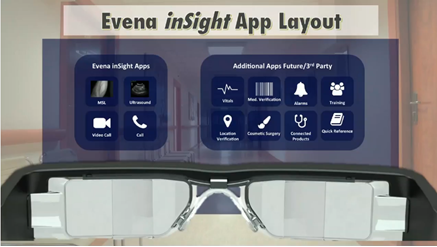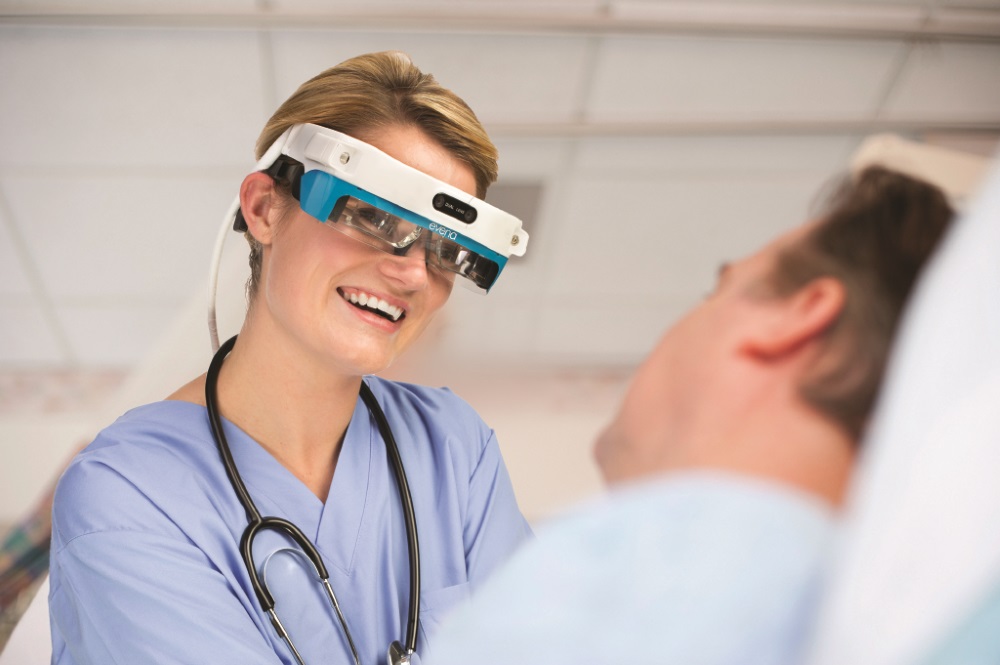Evena Medical is a relatively new company, founded in 2010, with the faces of Dr. Melvyn Harris MD (Chief medical officer) and Mr. Frank J. Ball (chief executive executive officer) heading the project. Evena Medical is one of the few companies that are right now approaching medicine using augmented reality for a mainstream audience. We saw them at the Augmented World Expo 2017 (you can catch a little bit of that HERE), where they presented their belief on how their particular approach to augmented reality proves beneficial for the healthcare environment as a whole, and we at ARinMED want to show you a little insight into their work.

First, we need to talk about EYES-ON GLASSES 3.0, a brand new mixed reality technology that brings Multispectral light and ultrasound-based apps together using a head mounted display. It’s a translucent display that basically gives the user super powered vision! Using the Evena EYES-ON GLASSES 3.0, doctors can have a direct visual into the vascular access that they want to take. Other technologies have done this too, which you can read about here, but this is the first healthcare-designed HMD. We say this because Evena’s plan is to use this kind of device (apparently the EYES-ON GLASSES 3.0 is not the only one they have in development) for other functions in healthcare. This might include third party apps that allow healthcare professionals to monitor vitals, set alarms, perform training, connect other devices, and for quick reference about patient information. Evena is building the ultimate partner for the healthcare professional!

The folks at Evena are building a custom-made head mounted device for healthcare professionals. Apparently, they are thinking about two things that most manufacturers aren’t taking into account: first, they are switching the processing unit to a belt position to diminish the heat generated by the device during long-term use, and second, they’re making a longer lasting battery. The battery will also be located in the belt unit, and probably interchangeable, which also helps to reduce the weight and heat of the device.

Before we drift too far away from the subject, let’s talk about the efficiency of the device. Clinical trials haven’t been performed yet, but if that stage of development goes well, then needle-sticks will be able to be successful the first time every time. The nurse or doctor will use the head mounted device to locate the venipuncture site, decide which vein is the best to use, and stick the patient, all in a matter of seconds and without the trauma of trial and error. As an added bonus, this system is compatible with the DeepVu™ portable ultrasound system via USB-connected transducer for imaging deeper veins, if needed.
What other plans are on the agenda for Evena Medical? Certainly they have proven that they are an ambitious company, but this technology has a lot of potential and just as many questions. For starters, by attaching the DeepVu™, will doctors be limited to making vascular ultrasound, or will the device be able to tackle thoracic and abdominal ultrasound in the future? Ultrasound is such an important tool in the emergency room, but patients, even critically sick or injured ones, often need to be transported into a different room for the procedure. If Evena’s vision is accurate, ultrasound imaging software could be a lot more portable, examined on the head mounted device in the ER. It could even be incorporated into their everyday utility belt, so to speak. We can only dream!
Let us know what you think about it in the comments section!








